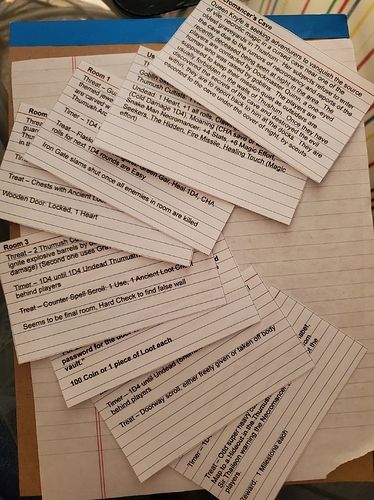First I picked an area in Alfheim: Thushum, the Goblin Home. Using the lore from the Worlds supplement, I got some of the main characters. I have also wanted to do something with Necromancers, so I built a 5 room dungeon using the concepts mentioned in the attached video. Then I went room by room and set up my 3 T’s (Timers, Threats and Treats). Finally, I typed all this out using an index card add-on for my word processor. Once printed and cut out, I read through the cards like a player and realized I needed an explanation as to how a bunch of outsiders were going to be allowed to move through Thushum and why the goblins weren’t willing to take care of the situation internally. I used Zoom (audio only, but shared my screen for Discord rollem bot).
The important thing is that you take the time to close your eyes and describe what you see, including the party’s physical relationship to the things you are describing. Close, Near and Far are your friends here or you can just say, “you could make it to the door and still have an action if you’d like.”
Hope this helps.


